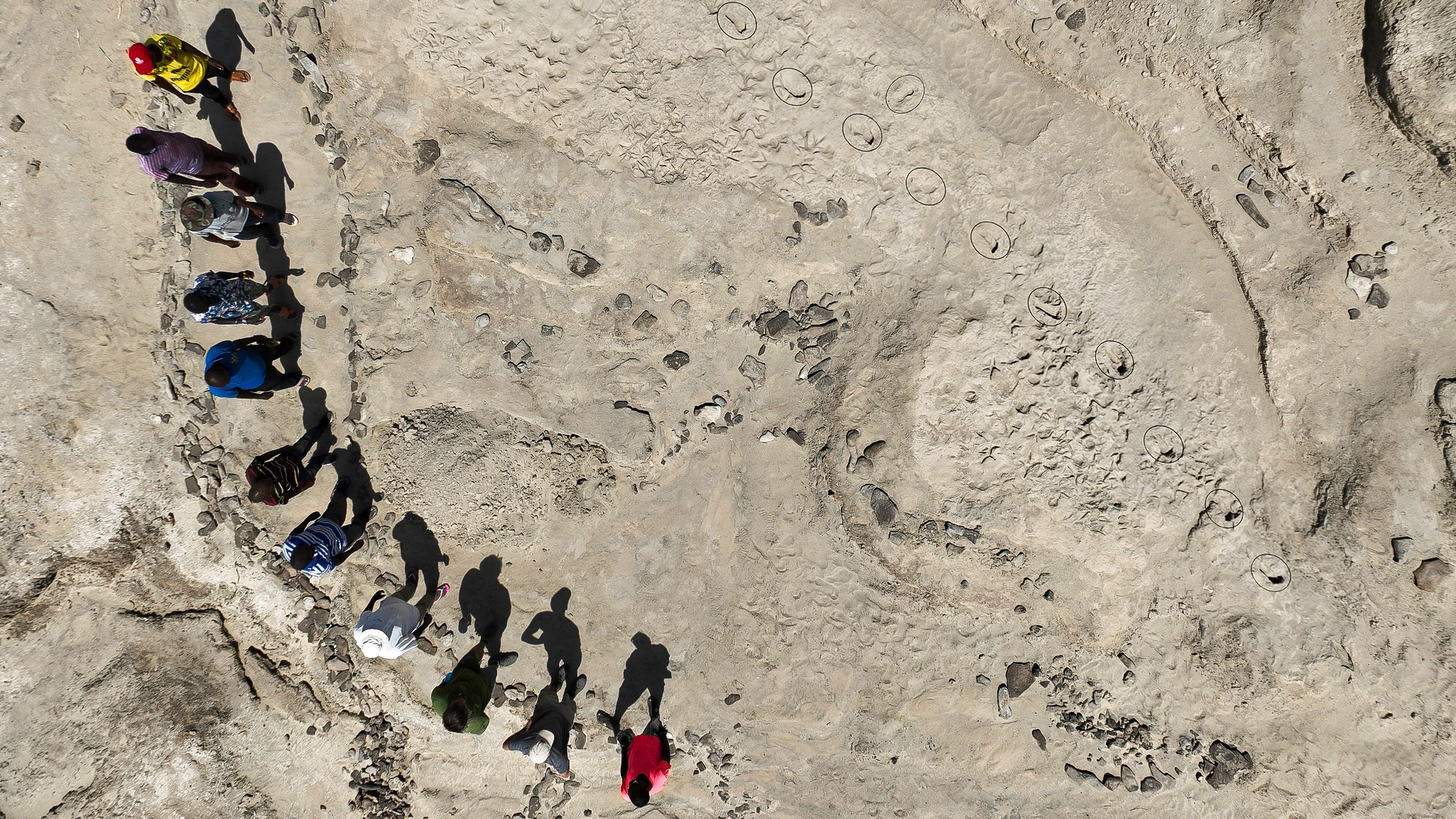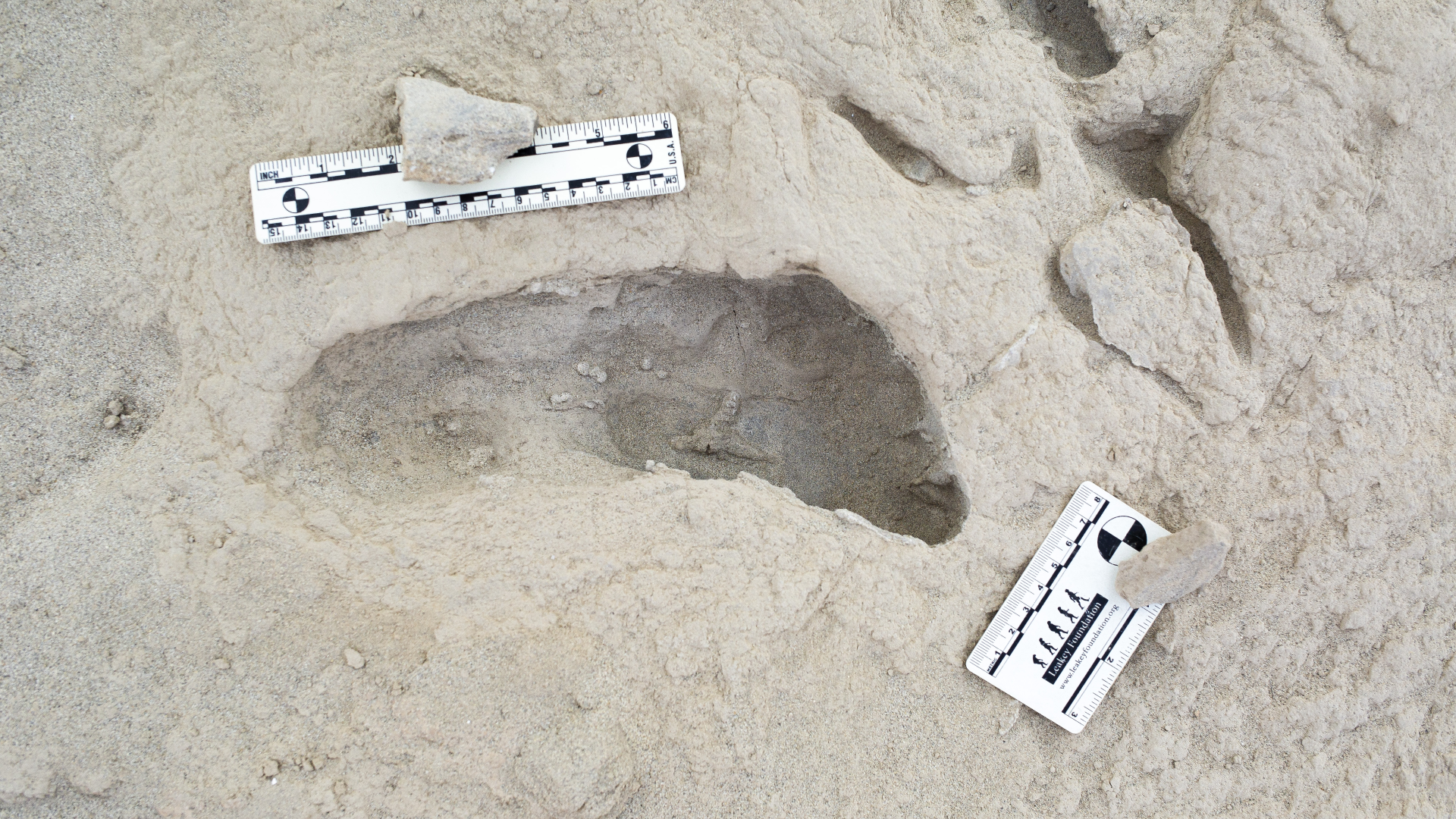
In a fossil first, researchers have announced the discovery of 1.5 million-year-old footprints that prove two different pre-human species coexisted in Kenya. The tracks hint that the species may have interacted, raising new questions about the behavior of our ancestors.
"I would expect the two species would have been aware of each other's existence on that landscape, and they probably would have recognized each other as being 'different,'" Kevin Hatala, a paleoanthropologist at Chatham University in Pennsylvania, told Live Science in an email.
Hatala led a team of researchers who analyzed the footprints, which were found at the site of Koobi Fora on the eastern shore of Lake Turkana in 2021. The scientists published their findings Thursday (Nov. 28) in the journal Science.
A number of fossil footprints have been found in East Africa — such as the famous trackway at Laetoli, Tanzania, made by Lucy's species Australopithecus afarensis 3.6 million years ago. But researchers noticed something unique about the Koobi Fora trackway: Two bipeds with significantly different feet made the tracks along the lake margin within hours of one another.
Several hominin species made their home at Koobi Fora over the span of about 3 million years, including two types of australopithecines and four members of the Homo genus. But because the fossil record is incomplete and fragmentary, paleoanthropologists could not determine which hominins lived on the same landscape at the same time.

The newly discovered Koobi Fora footprint trail is about 26 feet (8 meters) long and includes one trackway consisting of a dozen footprints made by one individual and three more footprints made by others. A giant extinct marabou stork (Leptoptilos falconeri) also tracked through the wet mud, which was rapidly buried and preserved.
Hatala and colleagues used 3D imaging techniques to evaluate the shape and movement of the trackmakers' feet. They found that two of the isolated footprints had high arches and a heel-to-toe footfall like modern humans. These footprints were likely made by our direct ancestor H. erectus, which had a very human-like body shape and size.
However, the trackway of a dozen footprints revealed a different pattern. These tracks were much flatter, with a deeper forefoot strike compared to the heel strike. The researchers also noticed that the big toe was somewhat spread out and not fully in line with the foot as it is in humans, suggesting that the trackmaker was likely Paranthropus boisei, a heavily built australopithecine with large jaws and a divergent big toe.

The sizes of the feet varied, but the researchers do not have enough information to determine whether the trackmakers were males, females or children, Hatala said. The dozen footprints were made by a P. boisei individual who would have worn a U.S. men's size 8.5 or women's size 10 shoe, he said, while the isolated H. erectus footprints were smaller, roughly a women's size 4 to a men's size 6.
Zach Throckmorton, a paleoanthropologist at Colorado State University who was not involved in the research, told Live Science in an email that "Hatala and colleagues' comparisons of foot impressions provide compelling and convincing evidence of the coexistence of Homo erectus and Paranthropus boisei at Koobi Fora in Kenya about 1.5 million years ago." Stability of the big toe is key to humans' ability to walk and run without foot problems, Throckmorton said, and "the less modern human-like trackway attributed to P. boisei lacks this critical adaptation."
In addition to revealing important anatomical differences, the footprints hint at the behavior of our hominin ancestors.
"Footprints are a snapshot of a moment in time," Jeremy DeSilva, a paleoanthropologist at Dartmouth College who was not involved in the study, told Live Science in an email. This new research means "we now know with certainty that these two different kinds of hominins not only lived at the same time, but they shared the same landscape and walked with slightly different gaits," DeSilva said. "I wonder what they thought of each other and how they interacted, if at all."
The interaction between P. boisei and H. erectus may have been akin to chimpanzees and gorillas, Hatala said — two species that have been seen engaging in both positive and negative social interactions. But as the newfound footprints were discovered within a few feet of one another and made within a short window of time, P. boisei and H. erectus may have been closer than we ever thought.
"It is fascinating to think about what they would have thought when they saw each other, and how they would have interacted," Hatala said.







